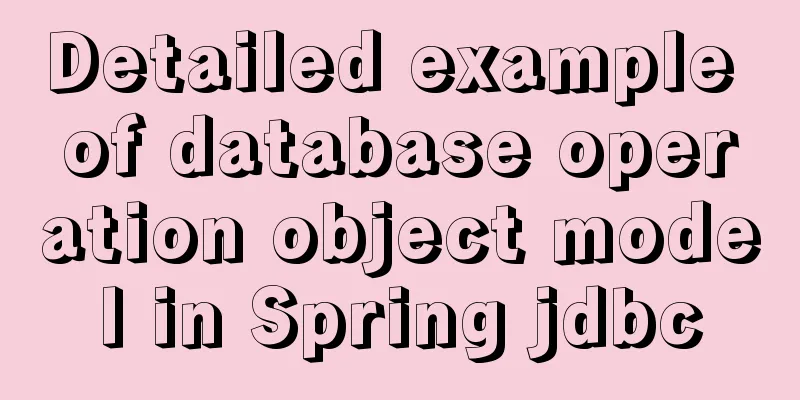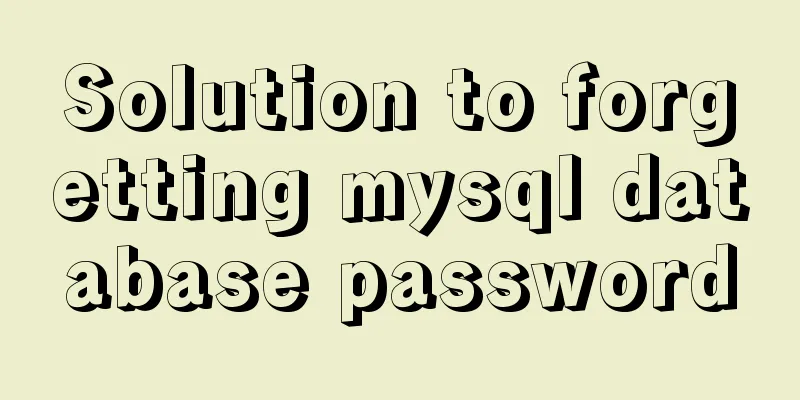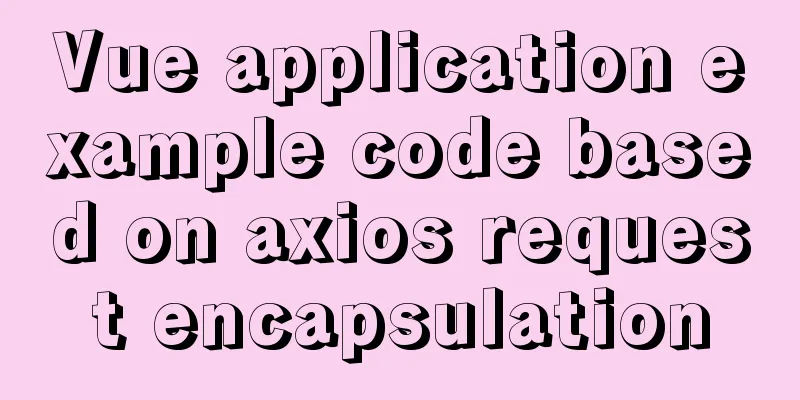Detailed example of database operation object model in Spring jdbc

|
Detailed example of database operation object model in Spring jdbc Spring Jdbc database operation objectification Use object-oriented methods to represent relational database operations and implement a thread-safe and reusable object model. Its top-level parent class interface is RdbmsOperation. SqlOperation inherits this interface to implement database operations such as select, update, and call. 1. Query interface: SqlQuery 1) GenericSqlQuery, UpdatableSqlQuery, MappingSqlQueryWithParameter 2) SqlUpdate, BatchSqlUpdate 3) SqlCall 1) Encapsulate the database operation select as an object. The base class of the query operation is SqlQuery. All queries can be represented by this class. Spring JDBC also provides some easier-to-use MappingSqlQueryWithParameters and MappingSqlQuery for mapping result sets to Java objects. The query object class also provides two extensions, UpdatableSqlQuery and SqlFunction. 2) Add, delete and modify operations, encapsulate the database operations insert, update and delete as objects. The base class for add, delete and modify operations is SqlUpdate. Of course, BatchSqlUpdate is also provided for batch processing. 3) Stored procedure and function calls are encapsulated as objects. The base class is the SqlCall class, which provides a StoredProcedure implementation. Database Connection JDBC: Spring jdbc controls the database connection through DataSource, that is, it is obtained through its implementation subclass. 1) DriverManagerDataSource: Simple encapsulation of DriverManager.getConnection() 2) SingleConnectionDataSource: encapsulates a connection internally, will not be closed and cannot be used by multiple threads, used for testing 3) LazyConnectionDataSourceProxy: Encapsulates DataSource and is used to delay the acquisition of database connections. The connection is only obtained when a Statement is actually created. Therefore, in actual projects, the proxy is finally used to wrap the original DataSource so that the connection is only obtained when it is really needed. Vendor: The DataSource implementations provided mainly include C3P0/Proxool/DBCP/, etc. These implementations all have database connection pool capabilities. DataSourceUtils: The Spring JDBC abstract framework obtains database connections through its getConnection(DataSource dataSource) method, releaseConnection(Connection con, DataSource dataSource) is used to release database connections, and DataSourceUtils is used to support Spring managed transactions. Only connections obtained using DataSourceUtils have Spring managed transactions. Spring JDBC provides consistent database access through the DaoSupport abstract class. 1) JdbcDaoSupport: supports consistent JdbcTemplate access 2) NamedParameterJdbcDaoSupport: A subclass of JdbcDaoSupport that provides access to NamedParameterJdbcTemplate 3) SimpleJdbcDaoSupport: JdbcDaoSupport subclass, providing SimpleJdbcTemplate access Because the JdbcTemplate, NamedParameterJdbcTemplate, and SimpleJdbcTemplate classes use DataSourceUtils to obtain and release connections, and the connections are bound to threads, these JDBC template classes are thread-safe, that is, JdbcTemplate objects can be reused in multiple threads. If you have any questions, please leave a message or come to the community to discuss. Thank you for reading and I hope it can help you. Thank you for your support of this site! You may also be interested in:
|
<<: How to use a game controller in CocosCreator
>>: How to create a swap partition file in Linux
Recommend
Detailed explanation of the difference between Mysql temporary table and partition table
Temporary tables and memory tables A memory table...
Detailed explanation of the use of the built-in function locate instr position find_in_set in MySQL efficient fuzzy search
There are 4 commonly used methods, as follows: 1....
Tips for turning pixels into comprehensive brand experiences
Editor: This article discusses the role that inte...
Detailed explanation of the use of the MySQL parameter sql_safe_updates in the production environment
Preface In case of application bug or DBA misoper...
Three methods of automatically completing commands in MySQL database
Note: The third method is only used in XSell and ...
jQuery realizes the full function of shopping cart
This article shares the specific code of jQuery t...
How to install phabricator using Docker
I am using the Ubuntu 16.04 system here. Installa...
Detailed explanation of MLSQL compile-time permission control example
Preface The simple understanding of MySQL permiss...
An example of how Vue implements four-level navigation and verification code
Effect: First create five vue interfaces 1.home.v...
The most comprehensive explanation of the locking mechanism in MySQL
Table of contents Preface Global Lock Full databa...
The implementation principle of Zabbix dynamic execution monitoring collection script
When using Zabbix custom scripts to collect monit...
Detailed explanation of computed properties in Vue
Table of contents Interpolation Expressions metho...
The marquee tag in HTML achieves seamless scrolling marquee effect
The <marquee> tag is a tag that appears in ...
MySQL slow_log table cannot be modified to innodb engine detailed explanation
background Getting the slow query log from mysql....
Solution to the failure of MySQL to use innobackupex to backup the connection server
What should I do if MySQL fails to connect to the...









